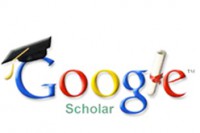Eksperimentasi Media Rubik Berbasis Teka-teki Silang Dalam Meningkatkan Penguasaan KosaKata Bahasa Arab Siswa Kelas X IPS MAN 4 Bantul Yogyakarta Tahun Ajaran 2018/2019
DOI:
https://doi.org/10.18196/mht.2220Keywords:
media pembelajaran, “rubik berbasis teka-teki silang”, mufradāt bahasa ArabAbstract
Penelitian ini adalah tentang penerapan media pembelajaran berupa permainan edukatif bahasa Arab “Rubik Berbasis Teka-teki Silang” sebagai media pembelajaran yang dapat meningkatkan penguasaan mufradât bahasa Arab. Penelitian ini bertujuan untuk: (1) untuk mengetahui proses pelaksanaan pembelajaran bahasa Arab menggunakan media “media rubik berbasis teka-teki silang”, (2) mengetahui ada dan tidaknya perbedaan antara kelompok eksperimen dan kelompok kontrol dalam meningkatkan penguasaan mufradāt. (3) mengetahui seberapa besar peningkatan media rubik berbasis teka-teki silang dalam meningkatkan penguasaan kosakata bahasa Arab pada kelas eksperimen. Penelitian ini menggunakan pendekatan kuantitatif dengan jenis penelitian classical eksperiment. Sampel dalam penelitian ini adalah kelas X IPS 2 MAN 4 Bantul yang dibagi menjadi kelompok eksperimen dan kelompok kontrol. Teknik pengumpulan data dalam penelitian ini menggunakan teknik test, wawancara, dan dokumentasi. Test dalam penelitian ini meliputi pretest dan posttest control group design. Hasil penelitian menunjukkan bahwa: (1) proses pembelajaran bahasa Arab menggunakan media rubik berbasis teka-teki silang sangat efektif, (2) hasil pretest kelompok eksperimen dan kontrol pada uji-t independent sample test menunjukkan bahwa sig. 0.039 < 0.05. Hasil posttest kelompok eksperimen dan kelompok kontrol pada uji-t independent sample test menunjukkan bahwa sig 0.00 < 0.05. Demikian juga ditunjang dengan analisis uji-paired sample test antara posttest kelompok eksperimen dan kelompok kontrol menunjukkan taraf signifikansi 0.033 < 0.05 sehingga dapat disimpulkan bahwa Ha diterima dan terdapat perbedaan yang signifikan, (3) Peningkatan hasil tes kelompok eksperimen sebesar 21.94 dan kelompok kontrol 6.56 membuktikan bahwa adanya perbedaan yang signifikan pada kelas eksperimen dalam penguasaan mufradāt bahasa Arab.
References
Arikunto, Suharsimi. 2013. Prosedur Penelitian Suatu Pendekatan Praktik. Jakarta: Rineka Cipta.
Arsyad, Azhar. 2003. Bahasa Arab dan Metode Pengajarannya. Yogyakarta: Pustaka Pelajar
__________. 2017. Media Pembelajaran. Jakarta: Rajawali Press.
Asyrofi, Syamsuddin. 2014. Model Strategi & Permainan Edukatif Dalam Pembelajaran Bahasa Arab. Yogyakarta: Aura Pustaka.
Furhan, Arief. 1982. Pengantar Penelitian dalam Pendidikan. Surabaya: Usaha Nasional.
Hamalik, Oemar. 1994. Media Pendidikan. Bandung: Citra Aditya Bakti.
Hamid, Abdul et al. 2008. Pembelajaran Bahasa Arab (Pendekatan. Metode, Strategi, dan Media). Malang: UIN Maliki Press.
Jannah, Lina Miftahul, dan Bambang Prasetyo. 2006. Metode Penelitian Kuantitatif, Teori, dan Aplikasi. Jakarta: Raja Grafindo Persada.
Khalilullah, M. 2012. Media Pembelajaran Bahasa Arab. Sleman: Aswaja Pressindo.
Kosim, Nanang. 2016. Strategi dan Metodologi Pengajaran Bahasa Arab. Bandung: Arvino Raya
Sugiyono. 2009. Metode Penelitian Pendidikan (Pendekatan Kuantitatif, Kualitatif, R&D). Bandung: Alfabeta.
Zein, Aswan, dan Syaiful Bahri Djamaroh. 2002. Strategi Belajar Mengajar. Jakarta: Rineka Cipta.
Downloads
Published
How to Cite
Issue
Section
License
Please find the rights and licenses in Maharaat: Jurnal Pendidikan Bahasa Arab. By submitting the article/manuscript of the article, the author(s) agree with this policy.
1. License
The use of the article will be governed by the Creative Commons Attribution license as currently displayed on Creative Commons Attribution 4.0 International License.
2. Author(s)' Warranties
The author warrants that the article is original, written by the stated author(s), has not been published before elsewhere. It contains no unlawful statements, their co-authors authorize them to enter into these arrangements, does not infringe the rights of others, is subject to copyright that is vested exclusively in the author and free of any third party rights, and that any necessary written permissions to quote from other sources have been obtained by the author(s).
3. User/Public Rights
Maharaat: Jurnal Pendidikan Bahasa Arab has a spirit to disseminate the published articles as free as possible. Under the Creative Commons license, the journal permits users to copy, distribute, display, remix, transform, and build upon the material for any purpose. Users will also need to attribute authors and Maharaat: Jurnal Pendidikan Bahasa Arab to distributing works in the journal and other media of publications. Unless otherwise stated, the authors are public entities as soon as their articles got published.
Attribution — You must give appropriate credit, provide a link to the license, and indicate if changes were made. You may do so in any reasonable manner, but not in any way that suggests the licensor endorses you or your use.
4. Rights of Authors
Authors retain their rights to the published works, in these following rights;
Authors hold the copyright and other proprietary rights relating to the article, such as patent rights,
Authors hold the right to use the substance of the article in own future works, including lectures and books,
Authors hold the right to reproduce the article for its own purposes,
Authors posess the right to self-archive the article or upload it on the author's social media account or website with the link to the journal.
5. Co-Authorship
If more than one author jointly prepared the article, any author submitting the manuscript warrants that he/she has been authorized by all co-authors to be agreed on this copyright and license notice (agreement) on their behalf and agrees to inform his/her co-authors of the terms of this policy. Maharaat: Jurnal Pendidikan Bahasa Arab will not be held liable for anything that may arise due to the author(s) internal dispute. Maharaat: Jurnal Pendidikan Bahasa Arab will only communicate with the corresponding author.
6. Miscellaneous
Maharaat: Jurnal Pendidikan Bahasa Arab will publish the article (or have it published) in the journal if the article’s editorial process is completed. The journal editors may modify the article to a style of punctuation, spelling, capitalization, referencing, and usage that seems appropriate. The author acknowledges that the article may be published to be publicly accessible, and such access will be free of charge for the readers.
.png)





